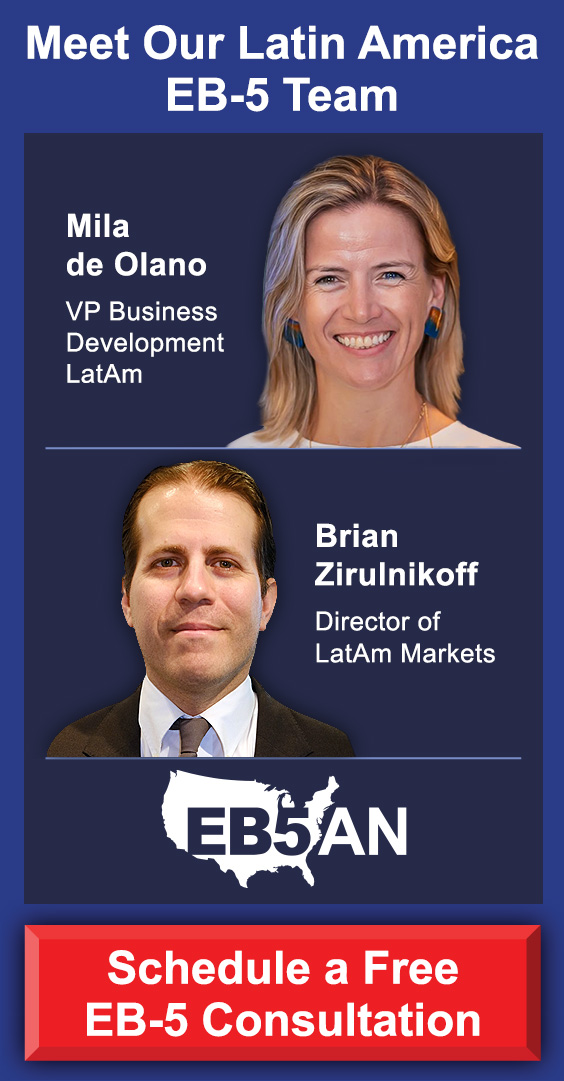The political landscape surrounding U.S. immigration has been in flux, especially under the leadership of President Donald Trump, whose policies during his previous term deeply impacted foreign nationals looking to settle in the U.S., particularly those from countries like India.
With the reelection of Trump, as the U.S. navigates a new political era, many Indian nationals are left to ponder the lasting effects of Trump’s immigration legacy. In particular, for Indian professionals and entrepreneurs aiming to establish a long-term future in the U.S., the evolving policies—especially those related to EB-1, EB-2, EB-3, and the H-1B visa—raise important questions.
In this article, we will analyze how Trump-era immigration policies might shape opportunities for Indians seeking permanent residency and explore how the EB-5 Immigrant Investor Program offers a more secure and streamlined path forward for those looking to secure a U.S. Green Card.
President Trump’s Immigration Policy and Its Impact on Indian Green Card Applicants- EB-1, EB-2, and EB-3: Traditional Employment-Based Green Cards
- H-1B Visa Holders: A Growing Sense of Uncertainty
The EB-5 Immigrant Investor Program: A Secure Pathway for Indian Nationals
EB5AN Can Help You Obtain a Green Card
President Trump’s Immigration Policy and Its Impact on Indian Green Card Applicants
Donald Trump’s first term took a hard stance on immigration, particularly illegal immigration and legal pathways that allowed skilled professionals and workers from countries like India to secure permanent residency in the United States. Policies during this time favored placing stringent measures on work visas, which significantly affected Indian nationals. The consequences were felt most acutely in Green Card categories such as EB-1, EB-2, EB-3, and non-immigrant visa categories like H-1B, which were critical pathways for skilled Indian workers seeking to work in the U.S.
EB-1, EB-2, and EB-3: Traditional Employment-Based Green Cards
For Indian nationals, the employment-based visa categories EB-1, EB-2, and EB-3 represent the most common routes for obtaining permanent residency in the U.S. The EB-1 category is typically reserved for individuals with extraordinary abilities in their fields, such as scientists, professors, or executives, while EB-2 and EB-3 categories are for individuals with advanced degrees or those in skilled or unskilled positions.
As of recent years, the waiting times for Indian applicants in these categories have stretched for decades, with EB-2 and EB-3 applicants potentially waiting at least 13 years before receiving their Green Cards. This backlog, coupled with heightened scrutiny in the U.S. immigration system, has left many hopeful applicants in limbo, unsure of when they will be able to achieve permanent residency.
In addition, Trump’s administration implemented strict measures to limit the number of Green Cards issued annually, especially under the EB-2 and EB-3 categories. These restrictions, combined with a growing demand for employment-based Green Cards from Indian nationals, further exacerbated waiting times, forcing many Indian professionals to rethink their immigration strategies.
H-1B Visa Holders: A Growing Sense of Uncertainty
The H-1B visa, a non-immigrant visa that allows U.S. employers to hire foreign workers in specialty occupations, is another crucial program for Indian nationals. For many Indian professionals, especially those in fields like IT, engineering, and healthcare, the H-1B visa serves as a steppingstone toward obtaining permanent residency through the EB-2, EB-3, or EB-5 visa categories.
Under Trump’s administration, the H-1B program came under heavy scrutiny, with the president frequently proposing measures to restrict the flow of foreign workers into the U.S. It is not hard to foresee his current term might include further efforts to end the H-1B lottery system, tighten the eligibility criteria, and increase the scrutiny of employers who hire foreign workers. These measures will likely make the H-1B program less accessible, particularly for Indian professionals who rely on it as a path to permanent residency.
Moreover, the Trump administration’s “Buy American, Hire American” executive order aimed to prioritize U.S. workers over foreign nationals, a policy that could have long-term consequences for Indian nationals who had planned on using the H-1B visa as a bridge to permanent residency. With uncertainty surrounding H-1B renewals and potential changes to the program’s structure, many Indian nationals began to explore alternative routes to U.S. immigration, seeking more secure and predictable pathways.
In addition to the existing challenges, recent policy shifts have further complicated the path to permanent residency for Indian nationals. On January 20, 2025, President Trump signed an executive order aiming to end birthright citizenship for children born in the U.S. to parents who are neither citizens nor lawful permanent residents, including those on temporary work visas like the H-1B. This move has significant implications for H-1B visa holders from India, as their U.S.-born children may no longer automatically receive U.S. citizenship.
The EB-5 Immigrant Investor Program: A Secure Pathway for Indian Nationals
In contrast to the uncertainties surrounding employment-based immigration categories like EB-1, EB-2, EB-3, and H-1B, the EB-5 program provides a more direct and secure route for foreign nationals, including Indian nationals, to obtain permanent residency in the U.S.
The EB-5 program allows foreign nationals to invest a minimum of $1,050,000—or $800,000 for targeted employment areas—in a U.S.-based new commercial enterprise that will create at least 10 full-time jobs for U.S. workers. In return, investors and their immediate family members (spouse and children under the age of 21) can receive U.S. Green Cards, granting them permanent residency. The program offers a faster and more predictable route to obtaining a Green Card, especially compared to the long waiting times associated with employment-based Green Cards.
Why EB-5 Is a Viable Solution for Indian Nationals
For Indian nationals seeking to avoid the uncertainty of employment-based Green Cards, the EB-5 program offers several key advantages:
Faster Processing Times
While waiting for an EB-2 or EB-3 Green Card could take decades, the EB-5 program offers a much quicker path to permanent residency. Although processing times can vary, they are generally much shorter for EB-5 applicants, especially for those who invest in rural targeted employment areas.
No Job Sponsorship Needed
Unlike the EB-2 or EB-3 categories, the EB-5 program does not require applicants to have a job offer or an employer sponsor. This provides greater flexibility for investors, as they are not dependent on a specific employer or job category.
No Long-Term Backlog
While Indian nationals face significant backlogs in the EB-2 and EB-3 categories, the EB-5 program currently does not have the same waiting time issues. However, some backlogs in the reserved set-aside visa categories are expected to happen in the near future, so prospective Indian investors in the U.S. are advised to act soon while benefits like concurrent filing for adjustment of status are still available to them.
Opportunities for Family Immigration
The EB-5 program allows investors to include their spouses and children under 21 as derivative beneficiaries. This ensures that the entire family can benefit from the investor’s Green Card status, which is an appealing feature for many families looking to establish a future in the U.S.
Diversification of Immigration Pathways
The U.S. immigration system has become increasingly complex, with numerous restrictions and limitations. The EB-5 program offers an alternative route that does not rely on traditional employment categories. For many Indian nationals, this is a highly appealing option to secure a permanent and stable future in the U.S.
EB5AN Can Help You Obtain a Green Card
In summary, new immigration policies may leave many Indian nationals in a precarious position when it comes to securing permanent residency in the U.S.
The EB-5 program stands out as a secure and expedited option for those looking to bypass the hurdles of employment-based Green Cards. By making a qualifying investment, Indian nationals can fast-track their way to permanent residency, providing both security and stability for themselves and their families in the U.S.
EB5AN has helped more than 2,300 families from 70+ countries relocate to the United States as lawful permanent residents. Our team has more than a decade of experience and offers clients first-rate, low-risk EB-5 regional center projects with a 100% USCIS project approval rate.
If you would like to know more about your EB-5 investment options, book a free call with our expert team today.










